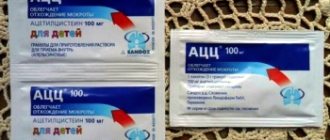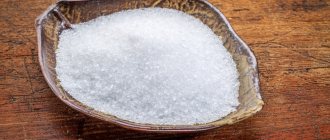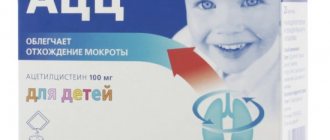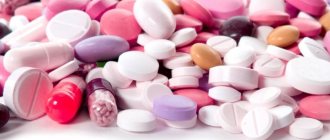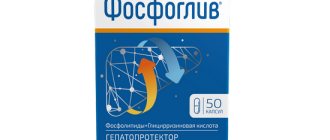Fosfomycin
Active substance:
Fosfomycin*
Pharmgroup:
Other antibiotics
Average price in pharmacies
| Name | Manufacturer | average price |
| Fosfomycin esparma 3.0 n1 pack for oral administration | ESPARMA GMBH | 346.00 |
Analogs for the active substance:Monural Urophosphabol Fosfomycin sodium Fosfomycin trometamol |
Instructions:
Clinical and pharmacological groups
06.030 (Antibiotic of the group of phosphonic acid derivatives. Uroantiseptic) 06.029 (Antibiotic of the group of phosphonic acid derivatives)
pharmachologic effect
Broad-spectrum antibiotic. The mechanism of action is associated with the suppression of the first stage of peptidoglycan synthesis in the bacterial cell wall. Being a structural analogue of phosphoenol pyruvate, it enters into a competitive interaction with the enzyme N-acetyl-glucosamino-3-o-enolpyruvyl transferase, resulting in specific, selective and irreversible inhibition of this enzyme.
Active against most gram-negative bacteria: Pseudomonas aeruginosa, Escherichia coli, Proteus mirabilis, Klebsiella pneumoniae; gram-positive bacteria: Staphylococcus spp. (including Staphylococcus aureus, Staphylococcus epidermidis), Streptococcus spp. (including Enterococcus faecalis).
Pharmacokinetics
Absorption is 60%; binding to plasma proteins - 10%. Cmax when taken orally at a dose of 50 mg/kg - 32 mcg/ml; with intravenous administration at a dose of 20 mg/kg - 130 mcg/kg; T1/2 - 2.2 hours. Penetrates quickly and is well distributed in tissues. 90% is excreted by the kidneys, creating high concentrations in urine.
Dosage
Taken orally. A single dose for adults is 3 g, for children - 2 g. The treatment regimen is established individually, taking into account the stage of the inflammatory process, the reactivity of the patient's body, and the sensitivity of microorganisms to fosfomycin.
Use during pregnancy and lactation
Fosfomycin is contraindicated for use during pregnancy.
During lactation, the use of fosfomycin is possible only in cases of extreme necessity under the supervision of a physician.
Side effects
Rarely: nausea, vomiting, diarrhea, skin rash, which disappears on its own after discontinuation of fosfomycin.
Indications
Treatment of infectious and inflammatory diseases (caused by microorganisms sensitive to the drug) of the lower urinary tract, incl. acute bacterial cystitis, exacerbation of chronic recurrent bacterial cystitis, acute bacterial urovesical syndrome, bacterial nonspecific urethritis, asymptomatic massive bacteriuria (during pregnancy), postoperative urinary tract infection. Prevention of urinary tract infections during surgical interventions and transurethral diagnostic examinations.
Contraindications
Hypersensitivity to fosfomycin, pregnancy.
special instructions
In infants, the use of fosfomycin is possible only in cases of extreme necessity under the supervision of a physician.
Preparations containing FOSFOMYCIN
• UROFOSFABOL® powder for preparation. solution for intravenous injection 4 g: fl. 1 or 5 pcs. • FOSFOMYCIN powder for preparation. solution for intravenous injection 1 g: fl. 1, 10 or 50 pcs. • UROFOSFABOL® powder for preparation. solution for intravenous injection 1 g: fl. 1 or 5 pcs. • MONURAL® (MONURAL) granules for preparation. solution for oral administration 3 g: packages of 1 or 2 pcs. • UROFOSFABOL® powder for preparation. solution for intravenous injection 2 g: vial. 1 PC. • UROFOSFABOL® powder for preparation. solution for intramuscular administration of 1 g: vial. 1, 5,10 or 50 pcs. • FOSFOMYCIN powder for preparation. solution for intravenous administration 500 mg: vial. 1, 10 or 50 pcs. • MONURAL® (MONURAL) granules for preparation. solution for oral administration 2 g: packages 1 or 2 pcs.
Buy Fosfomycin Esparma powder for oral solution 3g No. 1 in pharmacies
Dosage form:
powder for solution for oral administration
Compound:
1 package 8 g contains:
Active substance:
fosfomycin trometamol - 5.631 g (equivalent to 3.0 g fosfomycin);
Excipients:
sucrose - 2.244 g; orange flavoring - 0.065 g; tangerine flavoring - 0.050 g; sodium saccharin - 0.010 g.
Description:
homogeneous powder of white or almost white color, with a fruity odor, without agglomerates and foreign particles.
Pharmacotherapeutic group:
antibiotic
Pharmacological properties
Pharmacodynamics:
Broad-spectrum antibiotic. Has a bactericidal effect. It is a structural analogue of phosphoenol pyruvate and penetrates into the microbial cell, j The drug irreversibly inhibits the enzyme N-acetyl-glucosamino-3-o-enolpyruvyl transferase, irreversibly blocks the condensation of uridine diphosphate-N-acetyl-glucosamine with phosphoenolpyruvate, inhibits the synthesis UDP-N-acetyl-muramic acid, thus inhibiting the initial stage of peptidoglycan formation in the bacterial cell wall.
Cross-resistance of the drug with other antibacterial agents is unknown. In vitro, when combined with amoxicillin, cephalexin, pipemidic acid, a pronounced synergism of antimicrobial action is noted.
In vitro, gram-positive (Staphylococcus saprophytticus, Enterococcus faecalis) and gram-negative (Escherichia coli, Klebsiella pneumoniea, Citrobacter spp., Enterobacter spp., Proteus mirabilis) microorganisms are sensitive to fosfomycin. In vitro, fosfomycin trometamol reduces the adhesion of a number of bacteria to the epithelium of the urinary tract.
Pharmacokinetics
Suction:
Fosfomycin is moderately absorbed from the gastrointestinal tract when taken orally. In the body it dissociates into fosfomycin and trometamol.
The bioavailability of a single dose of 3 g when taken orally ranges from 32% to 54%. The maximum concentration in plasma (C max) is observed 2-3 hours (t max) after oral administration and is about 30 mg/l. The half-life from blood plasma varies from 3 to 4 hours.
Distribution:
Fosfomycin does not bind to plasma proteins, is not metabolized, and predominantly accumulates in the urine. Already 2-4 hours after oral administration of a single dose of 3 g, a high therapeutic concentration of 2-4 g/l is achieved in the urine, decreasing to 1-2 g/l after 6-12 hours. Average concentrations after 12-24 hours and after 36-48 hours were 0.762 g/l and 0.147 g/l, respectively.
The minimum inhibitory concentration (0.128 g/l), bactericidal for most common pathogens of urinary tract infections, remains in the urine for at least 48 hours, which determines treatment with a single dose.
Removal:
The main part is excreted unchanged by the kidneys. A small part is excreted through the intestines.
In cases of moderate decline in renal function, the half-life of fosfomycin by the kidneys is slightly prolonged depending on the degree of functional impairment.
Indications for use
Bacterial infections of the urinary tract of various localizations caused by microorganisms sensitive to fosfomycin:
- acute uncomplicated urinary tract infections; - asymptomatic bacteriuria; prevention of infections; — urinary tract after surgery and transurethral diagnostic studies.
Contraindications
- hypersensitivity to fosfomycin or other components of the drug; - severe renal failure (creatinine clearance <20 ml/min); - children under 12 years of age, since there is insufficient data on its use; - sucrase/isomaltase deficiency; - fructose intolerance; - glucose-galactose malabsorption.
Use during pregnancy and breastfeeding
During pregnancy, it is used only if the expected benefit to the mother outweighs the potential risk to the fetus.
When prescribing the drug during lactation, breastfeeding should be stopped for the duration of treatment.
Directions for use and doses
Inside.
Fosfomycin Esparma is used once, on an empty stomach, 2-3 hours before or after a meal, preferably before bedtime, after emptying the bladder: adults and children over 12 years old in a daily dose of 3 g. The contents of one package are dissolved in approximately 150-200 ml of water and taken immediately after preparation.
The course of treatment is 1 day.
To prevent urinary tract infections during surgery and diagnostic procedures, the indicated dose is taken 2 times - 3 hours before the intervention and 24 hours after it.
Fosfomycin Esparma should not be taken by patients weighing less than 50 kg and children under 12 years of age, as the dose cannot be divided or reduced.
Side effect
According to the frequency of development, side effects are in the following groups: Very common: (> 1/10) Frequent: (> 1/100 - < 1/10) Not common: (> 1/1,000 - < 1/100) Rare: (> 1/10,000 - < 1/1,000) Very rare: (< 1/10,000) Unknown: (the incidence of adverse events is not determined based on existing data). From the nervous system: Common: headache, dizziness, asthenia Not common: sensation of numbness of the skin, “crawling”, paresthesia Not known: optic neuritis From the cardiovascular system: Rare: tachycardia Not known: decreased blood pressure From the respiratory system , organs of the chest and mediastinum: Not known: bronchial asthma From the immune system: Not known: skin itching, anaphylactic shock, hypersensitivity reactions (angioedema, skin rash, urticaria) From the gastrointestinal tract: Not common: diarrhea, nausea, dyspepsia Rare: vomiting Unknown: pseudomembranous colitis, abdominal pain From the liver and biliary tract: Not common: increased activity of “liver” transaminases From the genital organs and mammary gland: Not common: vulvovaginitis From the blood and lymphatic system: Not common: thrombocytosis, leukopenia If any of the side effects indicated in the instructions get worse or you notice any other side effects not listed in the instructions, tell your doctor.
Overdose
Symptoms of overdose: vestibular syndrome, hearing impairment, “metallic” taste and general taste disturbances, diarrhea. A specific antidote has not been identified. If necessary, symptomatic treatment is carried out.
Interaction with other drugs
Concomitant use with metoclopramide, antacids or drugs containing calcium salts may lead to a decrease in the concentration of fosfomycin in the blood serum and urine. For this reason, it is recommended to take medications at intervals of 2-3 hours.
Concomitant use with other drugs that increase gastrointestinal motility can also lead to a decrease in the concentration of fosfomycin in the blood serum and urine.
special instructions
The occurrence of acute and persistent diarrhea during or after antibiotic treatment may be a symptom of antibiotic-induced colitis. The most serious form is pseudomembranous colitis.
In the case of pseudomembranous colitis, appropriate measures must be taken immediately. In this case, the use of drugs that slow down peristalsis is contraindicated.
The drug contains sucrose. Patients with rare hereditary diseases, fructose intolerance, glucose-galactose malabsorption or sucrase-isomaltase deficiency should not take this drug.
One packet of Fosfomycin Esparma contains approximately 2.3 g of sucrose, which is equivalent to approximately 0.19 bread units (XU).
Simultaneous food intake slows down the absorption of granules, so it is recommended to take the drug on an empty stomach, 2-3 hours before or after a meal.
Impact on the ability to drive vehicles and machines Patients should be warned about the possibility of developing dizziness and if dizziness occurs, they should refrain from performing these types of activities.
Release form:
Powder for solution for oral administration 3 g.
8 g of powder in bags made of three-layer material (paper-aluminum-polyethylene).
1 package with instructions for use in a cardboard box.
Storage conditions:
At a temperature not higher than 25 °C.
Keep out of the reach of children.
Best before date:
2 years.
Do not use after the expiration date stated on the packaging.
Conditions for dispensing from pharmacies:
On prescription.
